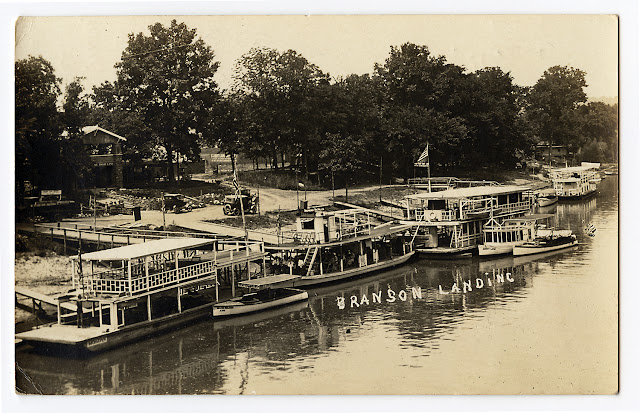In early settlement times, the spring pouring from a grotto beneath an overhanging bluff created a stream that powered water mills, once a common feature of Ozarks spring fed streams. The last mill was converted into a hotel in 1905.
Kansas City businessman, Roland M. Bruner bought the property that year and developed it into a vacation destination – Roaring River Camps and Hotel - during the 19-teens and twenties. Trains brought visitors to Cassville and jitneys brought them the seven miles out to the rustic, Adirondacks style resort.
The young lady pictured here is about to dive into the resort’s large swimming pool.
Bruner lost the property to foreclosure in 1928 and it was sold on the courthouse steps in Cassville. . St. Louis soap manufacturer, Thomas M. Sayman, bought the distressed property for $105,000 on November 16, 1928. A few weeks later, December 5, he donated it to the state of Missouri.
According to the nomination form for the National Register of Historic Places designation, both the Civilian Conservation Corps (CCC) and the Works Progress Administration (WPA) took part in developing Roaring River as a state park. From 1933 through 1939 Company 1713 built 33 buildings, 17 acres of beach improvements, six acres of landscaping, and miles of roads and trails.
This information is taken from the Nomination Form:
CCC Company 1713 arrived in the area in June 1933 and remained until November 1939. During this period, the CCC enrollees developed the hatchery, built new cabins and other park buildings, developed hiking trails, and repaired the damages of a disastrous flood. The major achievement of WPA workers at Roaring River was the construction of an impressive three-story stone and timber Lodge. An important survival in the park is Camp Smokey, which contains four original CCC officers' barracks.
There is one historic district in the park: Camp Smokey-Company 1713 Historic District. Nominated as non-contiguous sites are the following: Deer Leap Trail, the lodge, the club house (bathhouse), the honeymoon cottage, the shelter and restroom (#'s 30 & 311, and the dam/spillway.
Camp Smokey-Company 1713 Historic District is significant because: it is the only surviving Civilian Conservation Corps Officers' compound in the Missouri state park system; it is a good example of the military character of these installations, modified by rustic architectural details.
The CCC buildings in Camp Smokey are unusual survivals, because of the normal practice of razing the barracks and related structures whenever a CCC company abandoned a particular camp.
See more vintage photos and learn more details of The Back Story of Roaring River Park in
See the Ozarks.









